Do NOT pull or cut down the plant. OISC will properly remove and dispose of the plant to prevent spreading seeds and re-sprouting. Please report miconia to OISC. Send photo and location to oisc@hawaii.edu or text 808-286-4616. You can also call our office at 266-7994.
Miconia (Miconia calvescens)
Family: Melastomataceae
Considered very invasive and is on the Hawaii State Noxious Weed List. The Division of Forestry and Wildlife of the Hawai‘i Department of Land and Natural Resources has designated this species as one of Hawaii’s Most Invasive Horticultural Plants. Native to South and Central America, and was introduced to Hawai‘i as a garden plant in 1961 and spread around by plant enthusiasts. Miconia is a prolific seeder (up to 9 million seeds each year) and its tiny seeds can remain viable in the soil for 18 years, allowing for a strong seed bank to build over time. Miconia is OISC’s main target species. Miconia poses a great threat to the integrity of O‘ahu’s forested watershed. The Ko‘olau Mountains are also the largest and most important provider of freshwater on O’ahu however, it is also where most miconia plants and seed banks are located. OISC surveys the island, both by ground and air, to locate and remove miconia plants before they mature. It is our goal to achieve island-wide eradication.
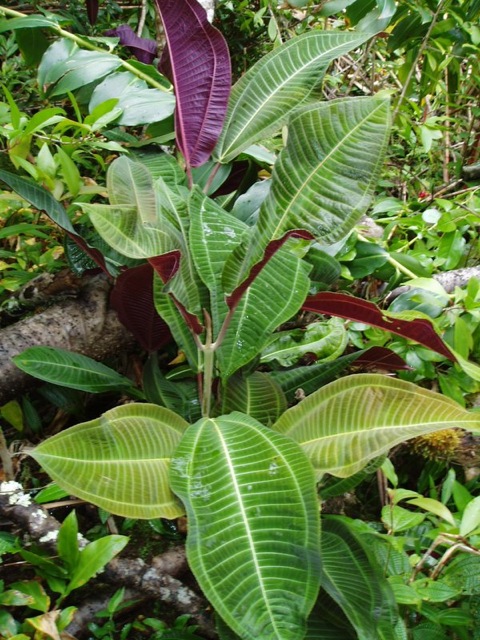
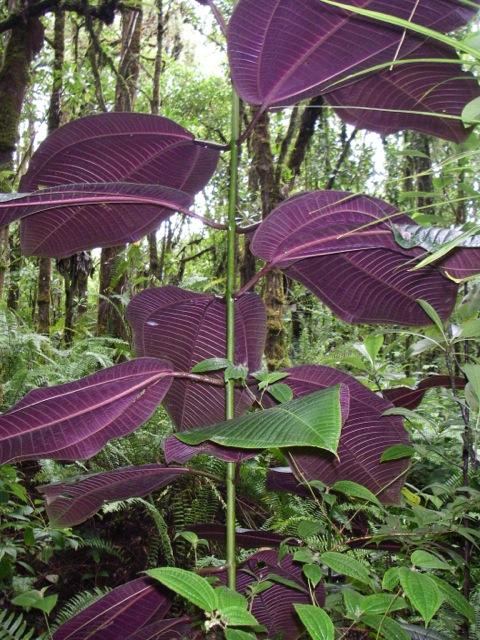
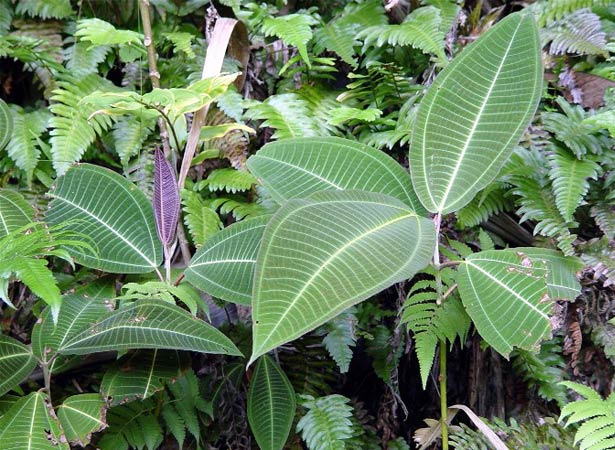
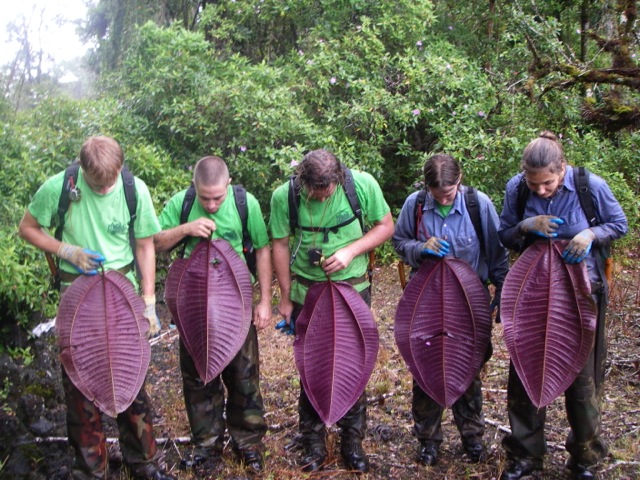
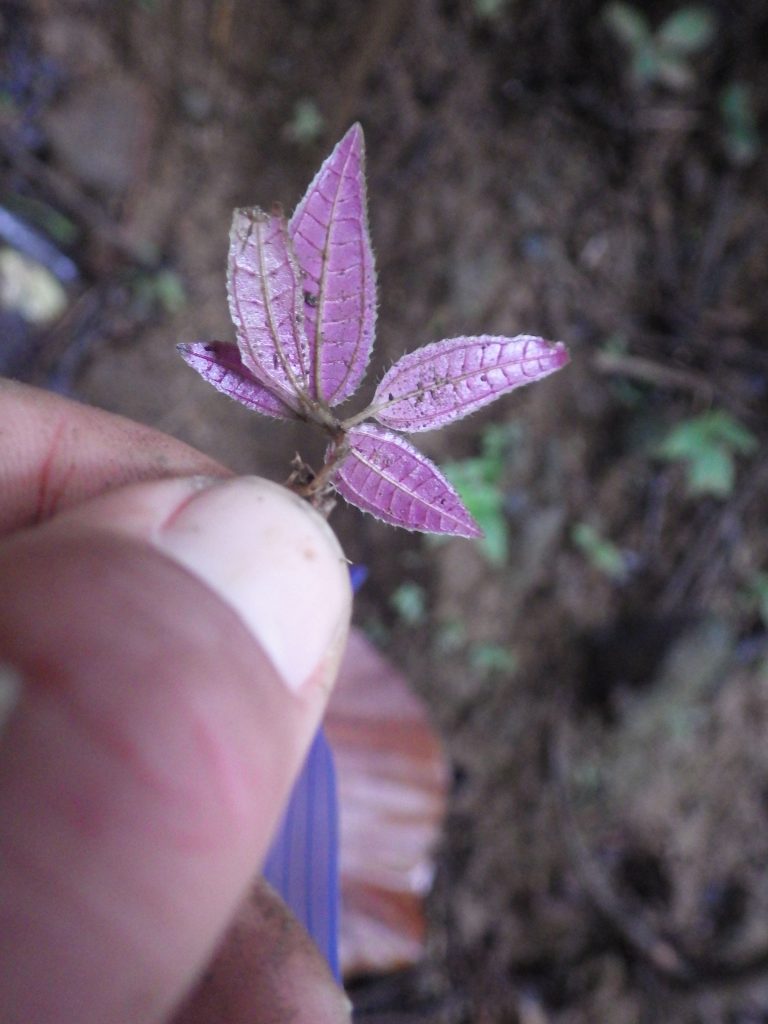
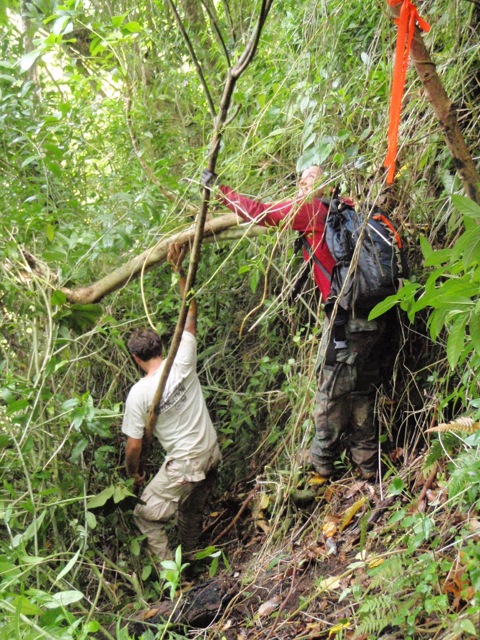
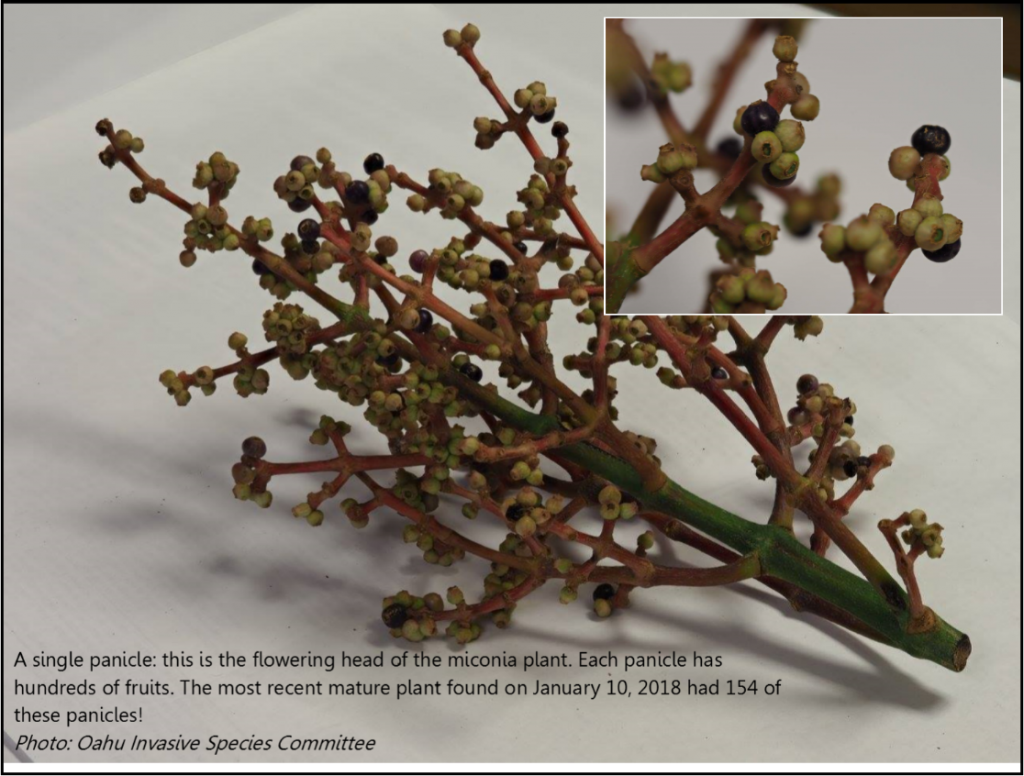
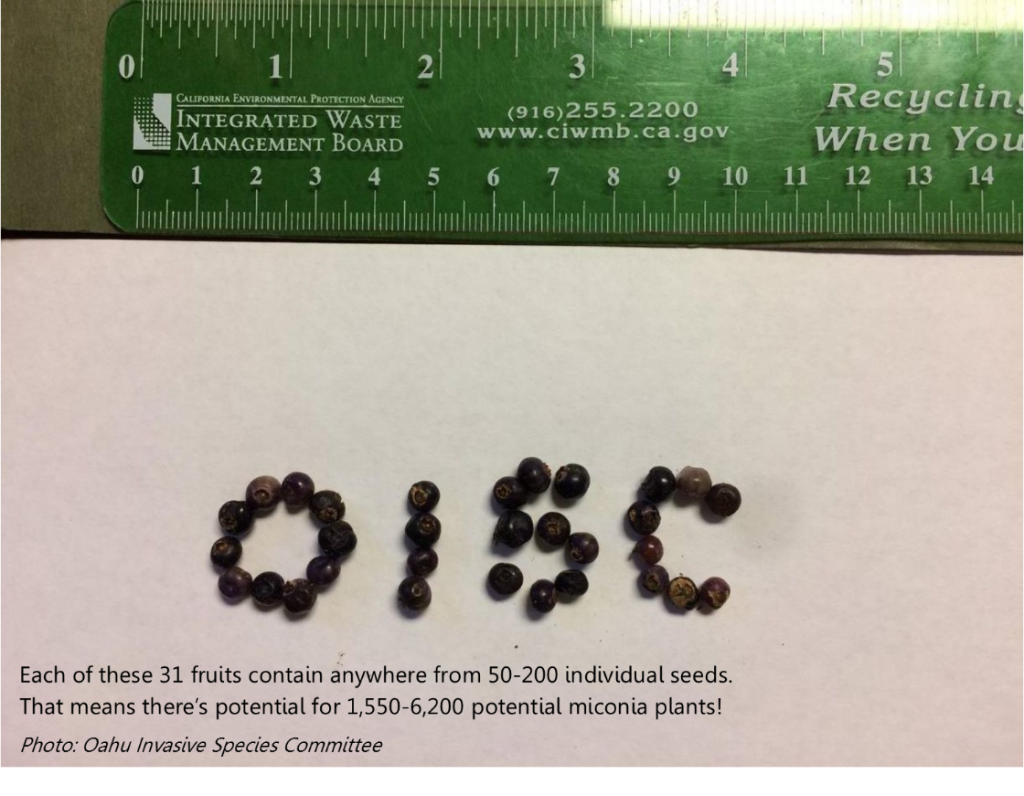
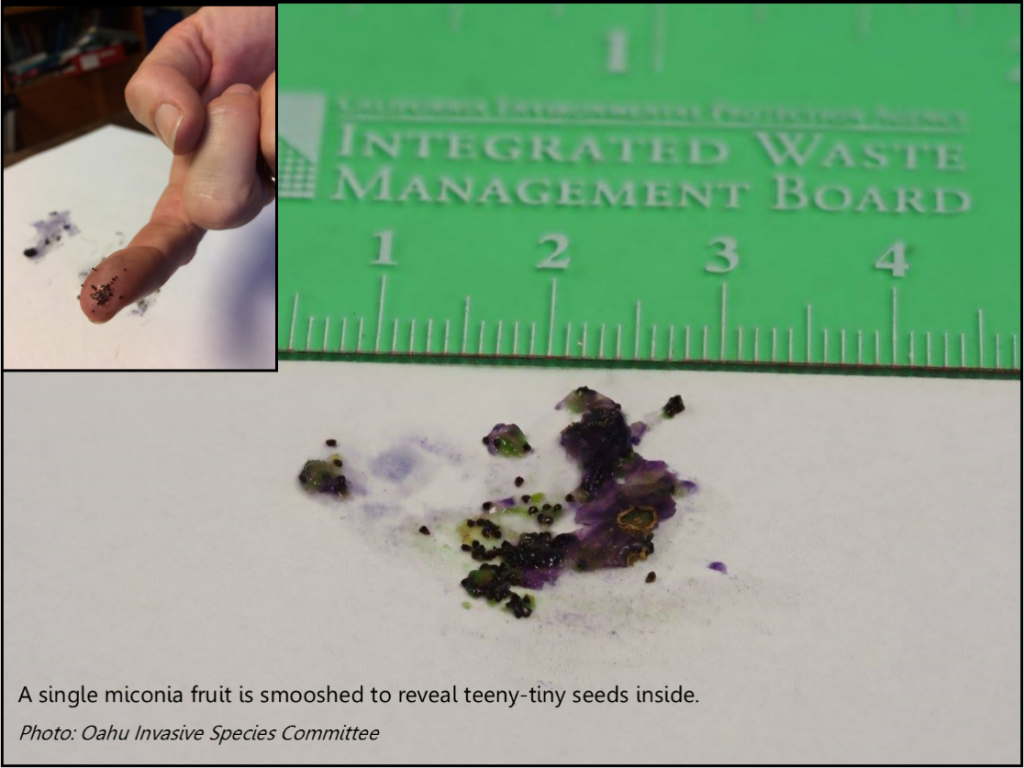
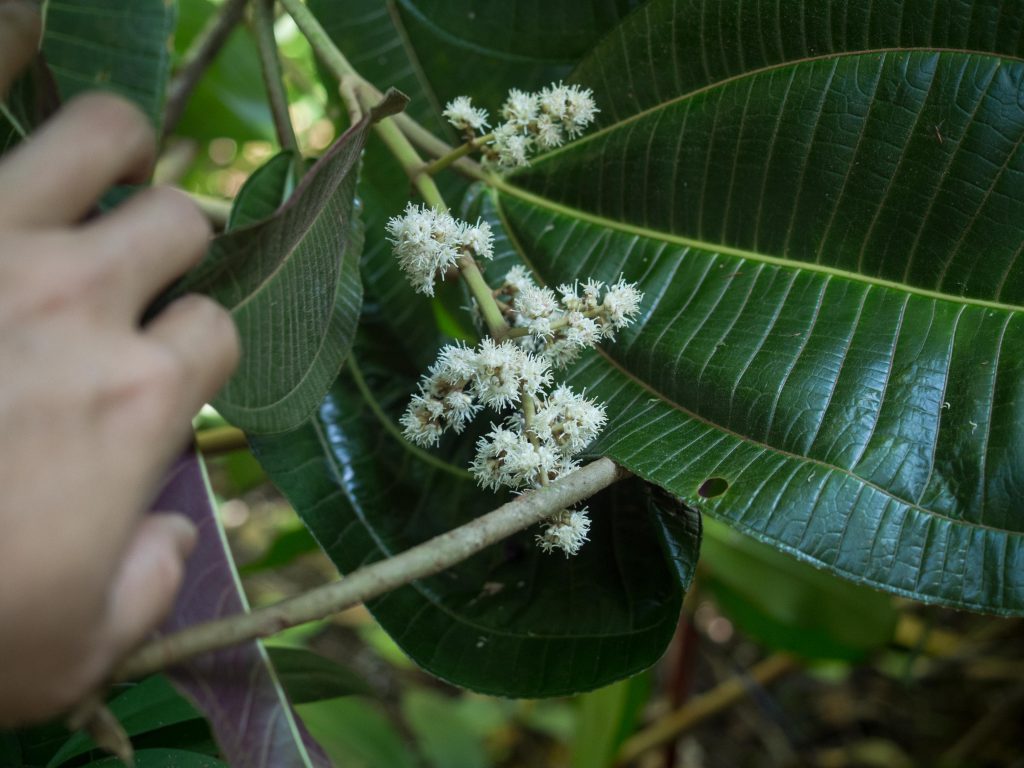
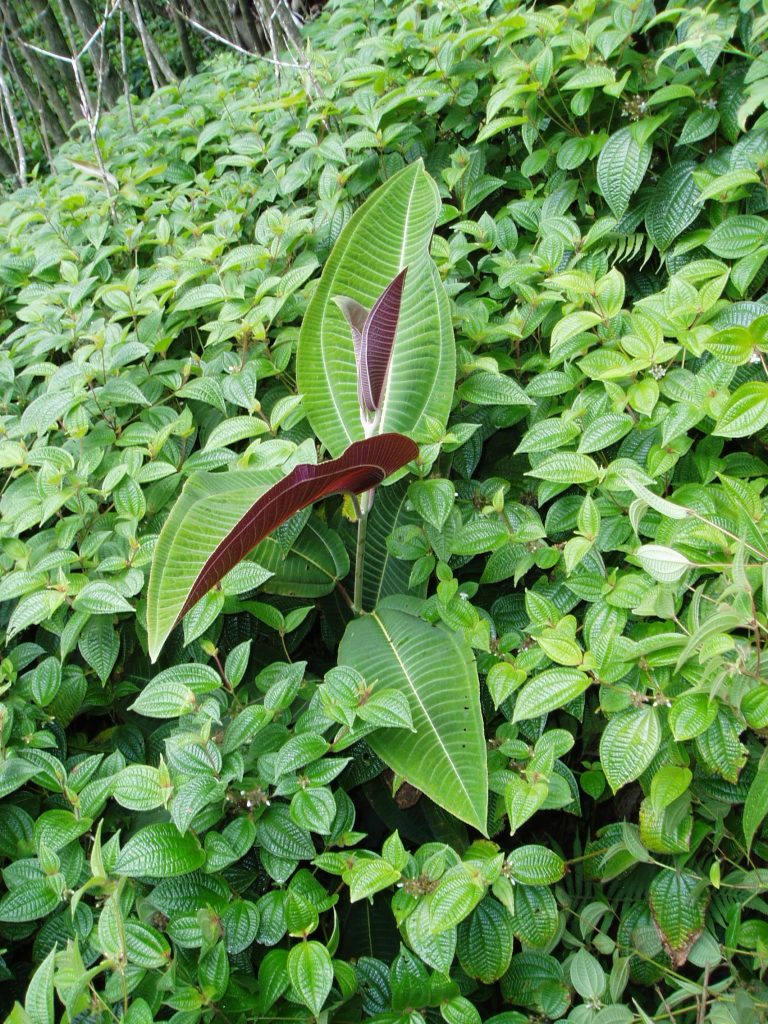
Description:
- Large tree grows up to 15 meters (50′) tall
- Large oval-shaped leaves, green on top, purple underneath, with three main midribs running from stem to leaf-tip
- Flowers are on a stalk and grow in clusters. They are white or light pink in color, small and sweet-scented
- Fruits are plentiful, dark purple, sweet and attractive to birds.
- Plant begin producing fruit as early as 4 years, one plant can produce up to 9 million seeds each year
Harm:
- Forms thick stands, shades out native plants and completely takes over moist and wet forests creating a monotypic forest
- Forms an “umbrella” over the watershed, reducing the amount of rainwater that seeps into the watershed.
- Shallow root systems promote erosion, degrading the quality of surface water and increasing sedimentation of near shore reefs
- Sand-grained sized seeds easily spread by birds and other animals when they eat the fruit. Seeds also spread by people when contaminated dirt or mud sticks to shoes, clothing, equipment, or vehicles
- Introduced to Tahiti in 1937 and has since overwhelmed two-thirds of Tahiti’s forests, and is directly responsible for threatening 25% of their native forest species with extinction
On O’ahu:
- Originally introduced and traded amongst botanical gardens in the early 1960’s, miconia has since spread into several locations in the Ko‘olau range. The potential population boundary extends to 9,500 acres (including areas considered “seed banks”).
- If left uncontrolled, miconia could infest up to 121,300 acres on Oahu. OISC is working to survey all population boundaries to completely eradicate it from O‘ahu.
- Decontamination is extremely important to reduce the risk of spreading miconia. Hikers, biker and any vehicle or construction equipment can easily transport miconia’s long-lived, tiny seeds that are caught in tread, dirt, clothing, and mud.
- Report miconia to OISC by calling 286-4616 or email oisc@hawaii.edu. Please DO NOT pull plants. OISC tracks plant locations and size class of miconia, both are factors in effective strategy for eradication.
